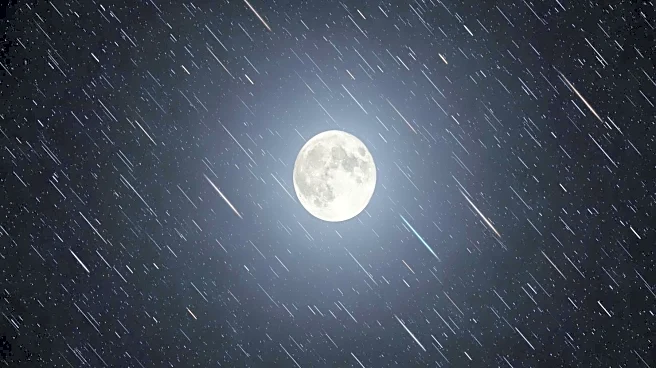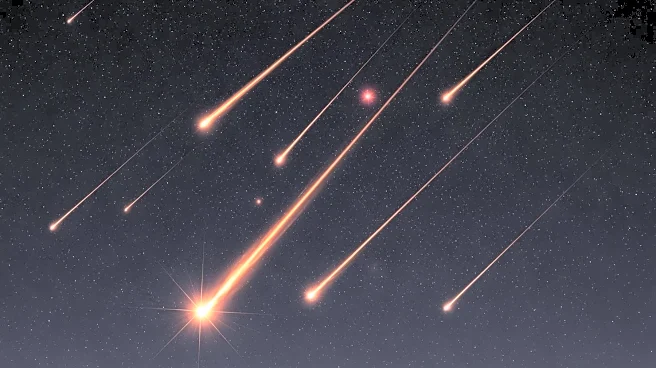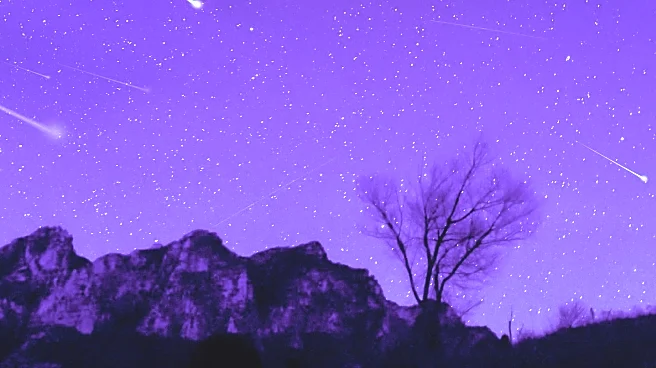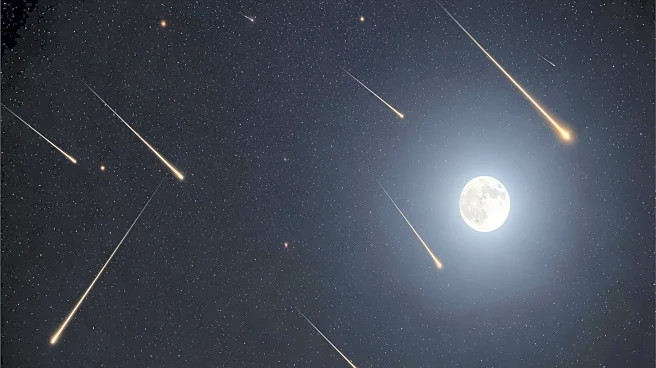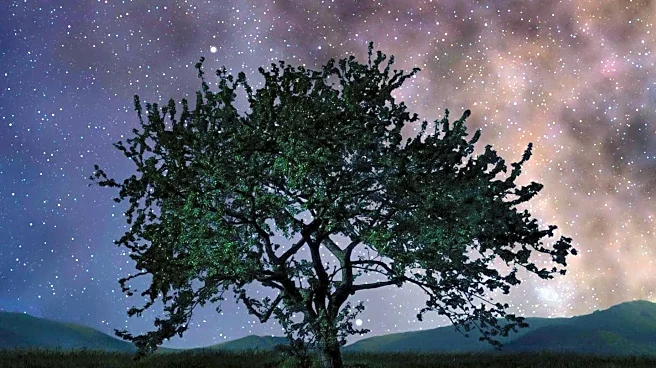What's Happening?
The Southern Taurid meteor shower is set to peak overnight on November 4-5, offering stargazers a chance to witness bright meteors streaking across the sky. This meteor shower occurs as Earth passes through
the debris trail of comet 2P/Encke. Known for producing spectacular fireballs, the Southern Taurids could display up to 10 bright meteors per hour during the peak. However, the presence of a near-full moon may limit visibility to only the brightest meteors. This year is considered a 'swarm year,' which means larger pieces of debris could result in more impressive fireballs. Stargazers are advised to look towards the constellation Taurus for the best viewing experience.
Why It's Important?
Meteor showers like the Southern Taurids offer a unique opportunity for both amateur and professional astronomers to observe celestial phenomena. The potential for spectacular fireballs during this 'swarm year' adds excitement to the event, drawing interest from the scientific community and the general public. Observing these meteors can provide insights into the composition and behavior of cometary debris. Additionally, such events foster public interest in astronomy and space science, encouraging educational activities and community engagement. The Southern Taurid meteor shower is a reminder of the dynamic nature of our solar system and the ongoing interactions between Earth and interplanetary debris.
What's Next?
Following the peak of the Southern Taurid meteor shower, astronomers will analyze data collected during the event to better understand the characteristics of the debris trail left by comet 2P/Encke. The next 'swarm year' for the Southern Taurids is expected in 2032, providing future opportunities for observation and study. Meanwhile, stargazers are encouraged to prepare for other upcoming meteor showers and celestial events. The scientific community will continue to monitor and predict meteor activity, contributing to our understanding of space phenomena and enhancing public interest in astronomy.
